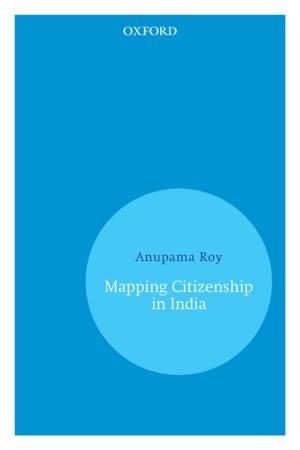The Geopolitical Orbits of Ancient India
The Geographical Frames of the Ancient Indian Dynasties
Nonfiction, History, Asian, India, Asia| Author: | Dilip K. Chakrabarty | ISBN: | 9780199088324 |
| Publisher: | OUP India | Publication: | October 18, 2010 |
| Imprint: | OUP India | Language: | English |
| Author: | Dilip K. Chakrabarty |
| ISBN: | 9780199088324 |
| Publisher: | OUP India |
| Publication: | October 18, 2010 |
| Imprint: | OUP India |
| Language: | English |
How did different parts of the Indian subcontinent interact throughout its ancient history? This book presents a new approach for understanding the political history of ancient India. It underlines how politics was enacted in various geographical orbits that kept interacting throughout the period without any fixed boundary or 'divide'. Dilip K. Chakrabarti closely examines the focal geographical points along which ancient Indian dynasties tried to expand their political power and interact with other contemporary dynasties. The author highlights the range of geographical possibilities of the regional power centres of various periods in ancient India. He also underlines the extent to which they operated within that frame. The Geopolitical Orbits of Ancient India argues that the web of inter-regional interaction was not limited to a particular set of regions but had a pan-Indian ramification. None of the regions could therefore thrive in political isolation. It underscores that regions in ancient Indian history never had any immutable historical shape or identity but were fluid, both in their interactions and outlines.
How did different parts of the Indian subcontinent interact throughout its ancient history? This book presents a new approach for understanding the political history of ancient India. It underlines how politics was enacted in various geographical orbits that kept interacting throughout the period without any fixed boundary or 'divide'. Dilip K. Chakrabarti closely examines the focal geographical points along which ancient Indian dynasties tried to expand their political power and interact with other contemporary dynasties. The author highlights the range of geographical possibilities of the regional power centres of various periods in ancient India. He also underlines the extent to which they operated within that frame. The Geopolitical Orbits of Ancient India argues that the web of inter-regional interaction was not limited to a particular set of regions but had a pan-Indian ramification. None of the regions could therefore thrive in political isolation. It underscores that regions in ancient Indian history never had any immutable historical shape or identity but were fluid, both in their interactions and outlines.















